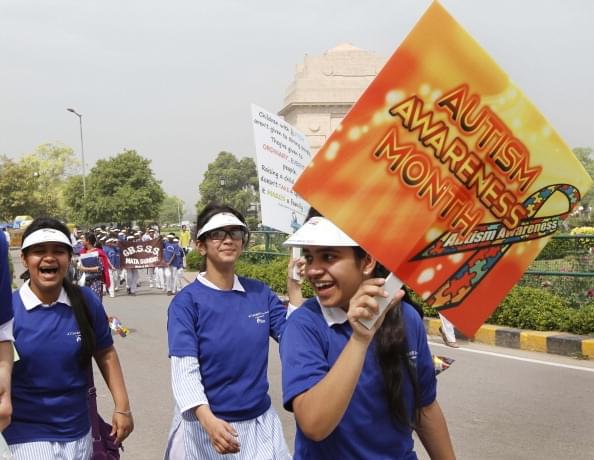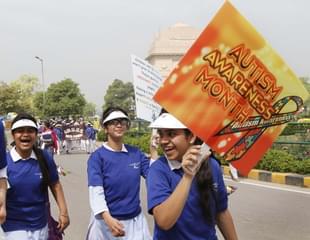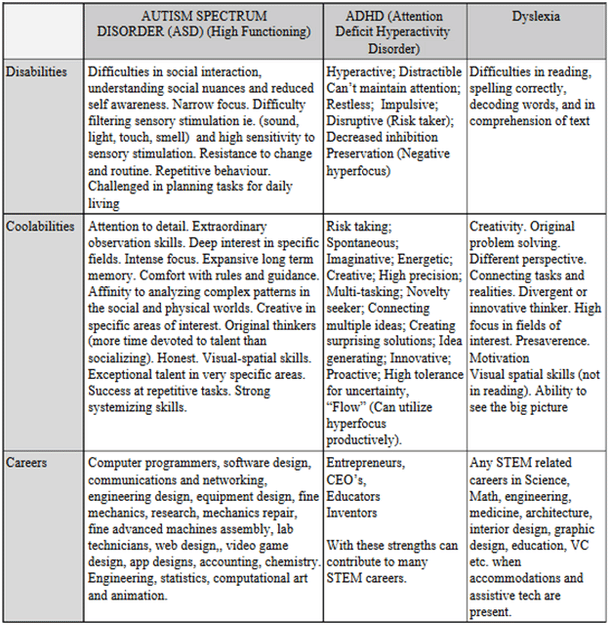Ideas
Why It Is Important To Change The Narrative Around Autism
V R Ferose
Apr 02, 2018, 11:20 AM | Updated 11:20 AM IST
Save & read from anywhere!
Bookmark stories for easy access on any device or the Swarajya app.


I have often been asked, “does changing a word change the narrative?”And my answer is always a big "yes". There is evidence to show that words “stick” in our minds and cause unintended actions. The words we attach to our experience become our experience. Words have a biochemical effect on our bodies. The minute you use a word like “devastated” you’re going to produce a very different biochemical effect than if you say, “I’m a bit disappointed”. Sometimes the simple replacement of the word we use in our own vocabulary, can break a pattern in ourselves. It can be as simple as saying you’re “mistaken” versus you’re “wrong”.
How do we use words to address people with disabilities? Does the word have an impact on how we view them in our society? There has been widespread discussion to change the word “people with disabilities” to “specially-abled people” or “differently-abled people”. I had to think through the consequence of putting the right title in my book GIFTED: Inspiring Stories of People with Disabilities. Finally, when I took the advice of the late Javed Abidi (director of National Centre for Promotion of Employment for Disabled People), he said, “go with what is accepted by the United Nations Convention on Rights of Persons with Disabilities (UN CRPD)”.
The language used to refer to people with disabilities has played a significant role in the persistence of negative stereotypes. Clearly, terms such as “crippled” or “mentally retarded” are derogatory. Other terms such as “wheelchair-bound” or “disabled persons” emphasise the disability before the person. The drafters of this convention were clear that disability should be seen as the result of the interaction between a person and his or her environment. Disability is not something that resides in the individual as the result of some impairment. This convention recognises that disability is an evolving concept and that legislation may adapt to reflect positive changes within society. Disability resides in the society, not in the person
- A person in a wheelchair might have difficulties being gainfully employed not because of her condition, but because there are environmental barriers such as inaccessible buses or staircases in the workplace which obstructs her access.
- A child with an intellectual disability might have difficulties going to school due to the attitudes of teachers, school boards and possibly parents who are unable to adapt to students with different learning capacities.
- In a society where corrective lenses are available, someone with extreme myopia (nearsightedness), would not be considered to have a disability. However, someone with the same condition in a society where corrective lenses were not available would be considered to have a disability, especially if the level of vision prevented the person from performing tasks expected of this person such as shepherding, sewing, or farming.
There have been many such discussions around the word “autism spectrum disorder”, if it should in fact be called “autism spectrum condition” because this helps us focus on the condition rather than framing it as a disorder. My friend Chally Grundwag came up with a fascinating new word “coolabilities” to describe the enhanced abilities, talents and strengths of people with Disabilities. Grundwag categorises “coolabilities” as:
- Traits that are disabling or non-functional in some settings but become useful and valuable when applied in a different context
- Abilities that are amplified to compensate for the loss of other abilities
- Abilities that are present in individuals with specific physical or cognitive traits but are rare or nonexistent among the normal/neurotypical population.
Coolabilities include skills learned to compensate, for example, for a missing limb, a loss of motor control or an enhanced cognitive function. For example, the ability to paint with precision among mouth and foot artist, enhanced response to distress among some people with down syndrome and, ways of perceiving and processing sensory input that are usually not present in the general population, such as a blind person learning to use echolocation.
The table below (also from Grundwag) shows the beginning of a coolabilities careers data set, which identifies disabilities, their associated coolabilities, and the matching of some possible career paths.

I have been fortunate to contribute to one of the most interesting projects under i4j (Innovation for Jobs), a non-profit organisation founded by the legendary Vint Cerf and David Nordfors. While working on the coolabilites project, we realised that once we changed the narrative, the opportunities opened up. When we use the word coolabilites instead of disabilities, the focus shifted on the strengths rather than the weaknesses. The job market that was previously closed to hiring people with disabilities is now more receptive to hiring people with coolabilities. Humans with coolabilities will be seen to have strengths that can add a positive influence to society. It is these cool people who will bring colour and humanity to our race, bring out the best and maybe even the worst in ourselves.
Bestselling Author Tony Robbins calls it Transformational Vocabulary, “the power of changing just one key word in communicating with someone can instantly change the way people feel and how they behave.” Words we consistently use to describe emotions can instantaneously change how we think, how we feel, and how we live.
We can change our experiences by taking the most negative feelings in our life and lowering their intensity to the point where they no longer control us. The same can be used to take positive experiences and increase them to even greater heights of pleasure.
A few years ago, Google released a searchable database of 5.2 million books published since the year 1500. Researchers soon discovered that between the years of 1960 and 2008, individualistic words increasingly overshadowed communal ones. The usage of “kindness” and “helpfulness” dropped by 56 per cent, even as “modesty” and “humbleness” dropped by 52 per cent. As a society, we moved from “we” to “me”. Our language reflects our lives. Our words reflect our minds.
As per Compton’s Encyclopedia, the English language contains some 500,000 words. Yet the average person’s working vocabulary consists of 2,000 words, 0.5 per cent of the entire language. And what about the number of words we use most frequently, the words that make up our habitual vocabulary? For most people, unbelievably, it averages at 200-300 words. Of those 500,000 words, as many as 3,000 are used to describe emotions, and two-thirds of which are used to describe negative emotions. What if we consciously make most of the words we use as positive emotions? Would we live in a happier world?
So, as I walk the hallways of the United Nations on World Autism Awareness Day, I am forced to think - should it be autism spectrum disorder or autism spectrum condition?
Either ways, selecting the right words matter!
Based in Palo Alto, VR Ferose is SVP & Head of Globalization Services at SAP SE. He is a Board Member of Specialist People Foundation. He founded the India Inclusion Foundation, which seeks to mainstream India’s inclusion discussion, and conducts the India Inclusion Summit and Inclusion Fellowships. In 2012, the World Economic Forum named him a ‘Young Global Leader’. In March 2017, he was conferred the AUCD award for his pathbreaking ‘Autism at Work’ initiative. Ferose has co-authored Gifted, a best-seller on people with disabilities.





